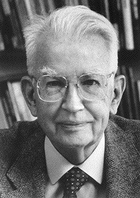 On CNET today, I have a longish post on the FCC’s continued machinations over LightSquared and Dish Networks respective efforts to use existing satellite spectrum to build terrestrial mobile broadband networks. Both companies plan to build 4G LTE networks; LightSquared has already spent $4 billion in build-out for its network, which it plans to offer wholesale.
On CNET today, I have a longish post on the FCC’s continued machinations over LightSquared and Dish Networks respective efforts to use existing satellite spectrum to build terrestrial mobile broadband networks. Both companies plan to build 4G LTE networks; LightSquared has already spent $4 billion in build-out for its network, which it plans to offer wholesale.
After first granting and then, a year later, revoking LightSquared’s waiver to repurpose its satellite spectrum, the agency has taken a more conservative (albeit slower) course with Dish. Yesterday, the agency initiated a Notice of Proposed Rulemaking that would, if adopted, assign flexible use rights to about 40 Mhz. of MSS spectrum licensed to Dish.
Current allocations of spectrum have little to do with the technical characteristics of different bands. That existing licenses limit Dish and LightSquared to satellite applications, for example, is simply an artifact of more-or-less random carve-outs to the absurdly complicated spectrum map managed by the agency since 1934. Advances in technology makes it possible to successfully use many different bands for many different purposes.
But the legacy of the FCC’s command-and-control model for allocations to favor “new” services (new, that is, until they are made obsolete in later years or decades) and shape competition to its changing whims is a confusing and unnecessary pile-up of limitations and conditions that severely and artificially limit the ways in which spectrum can be redeployed as technology and consumer demands change. Today, the FCC sits squarely in the middle of each of over 50,000 licenses, a huge bottleneck that is making the imminent spectrum crisis in mobile broadband even worse.
Even with the best of intentions, the agency can’t possibly continue to micromanage the map. And, as the LightSquared and Dish stroies demonstrate yet again, the risk of agency capture and political pressure often mean the agency doesn’t do the right thing even when it does act.
Who would be the more efficient and neutral regulator? According to Nobel Prize-winning economist Ronald Coase’s seminal 1959 article, “The Federal Communications Commission,” the answer is the market. In his trademark straight-forward, common sense style, Coase elegantly dismantles the idea that scarce spectrum resources demand a non-market solution of government management.
For one thing, Coase demonstrates how screwed up the system already was over fifty years ago. There’s little doubt that the problems he describes have only gotten worse with time and increased demand on the airwaves by insatiable consumers.
Instead, Coase proposed to treat spectrum like any other industry input–as property. The FCC, he said, should auction spectrum rights to the highest bidder, without licenses, conditions, or limitations on use, and then stand back. (He acknowledged the risk of antitrust problems, but, as in any industry, such problems could be addressed by antitrust regulators and not the FCC.) Spectrum rights would efficiently change hands when new applications and devices created higher-value uses.
Potential interference problems–such as those raised by GPS device manufacturers in the case of LightSquared–would be resolved precisely as they are in other property contexts. Without an FCC to run to, the parties would be forced to negotiate against a backdrop of established liability rules and a safety net of potential litigation. Indeed, LightSquared and GPS offer a classic example of Coase’s later work demonstrating that regardlesss of how property is initially allocated, liability rules ensure that parties will bargain to the most socially-efficient solution to interference.
Of course we’ll never know if the socially-optimal solution here is for LightSquared to protect GPS devices from receiving its signal or for device manufacturers to change their designs to stay out of LightSquared’s bands. The heavy hand of the regulator has foreclosed a market solution, or even an attempt at negotiations.
Instead, we have the disaster of the FCC’s decision in January, 2011 to grant a conditional waiver to LightSquared and then, last month, indefinitely revoking it. Meanwhile, LightSqaured spent $4 billion on infrastructure it may never use, and lost its CEO and key customers including Sprint. No one is happy, and no one reasonably argue this is was an optimal outcome, or even close to one.
For Dish, the NPRM will ensure a more orderly process, but at the cost of months or perhaps longer delay before Dish can begin building its terrestrial network. And in the interim, all sorts of irrelevant issues may interfere with the orderly (and expensive) resolution.
When Coase proposed a property model for spectrum in 1959, the idea was considered too radical. Congress and the FCC have, slowly but surely, taken pieces of the proposal to heart, introducing auctions (but not property rights) in the 1990’s. Yesterday’s NPRM takes a small step toward more flexible use licenses, but this may be too little reform too late. We have all the evidence we need that micromanagement of spectrum can’t possibly keep up with the pace of innovation. Time to try a new, fifty year old, approach.

 The Technology Liberation Front is the tech policy blog dedicated to keeping politicians' hands off the 'net and everything else related to technology.
The Technology Liberation Front is the tech policy blog dedicated to keeping politicians' hands off the 'net and everything else related to technology.